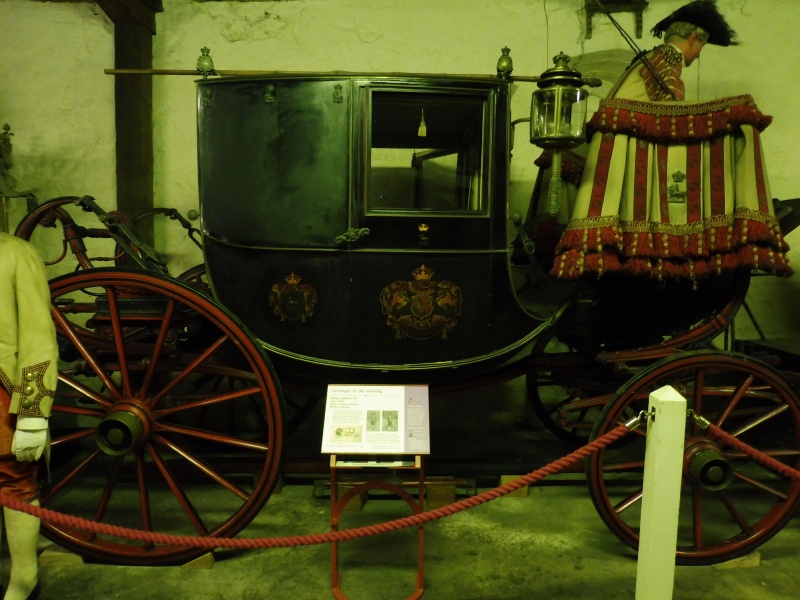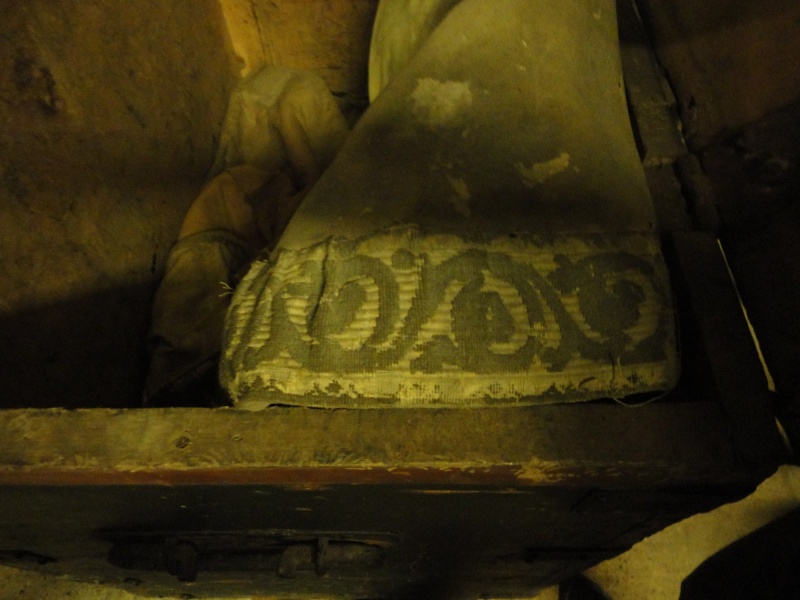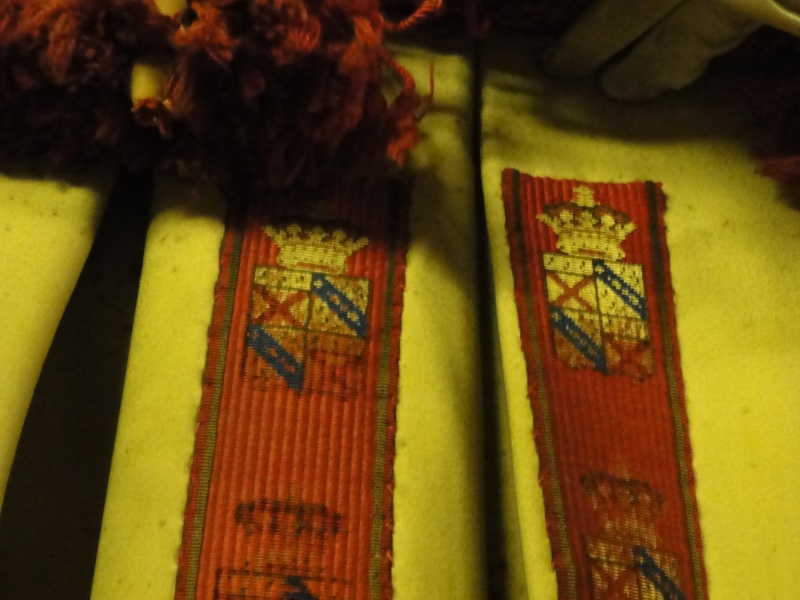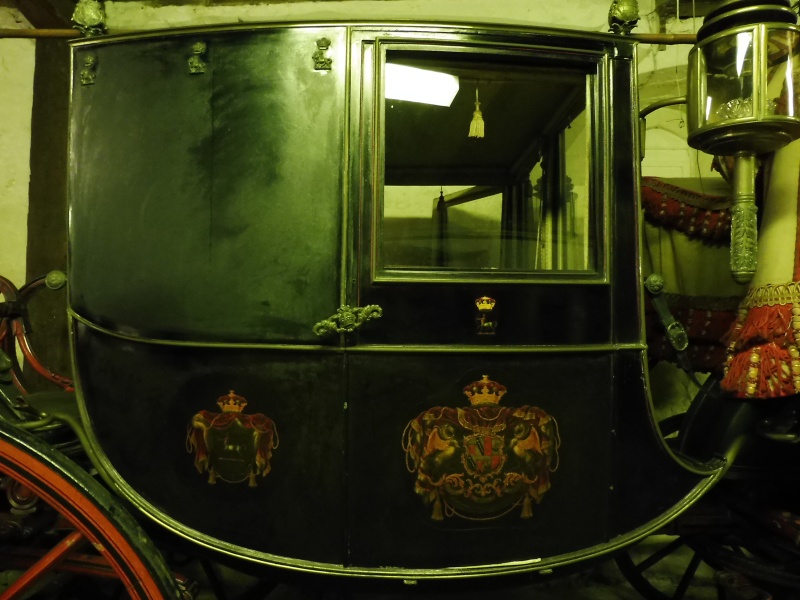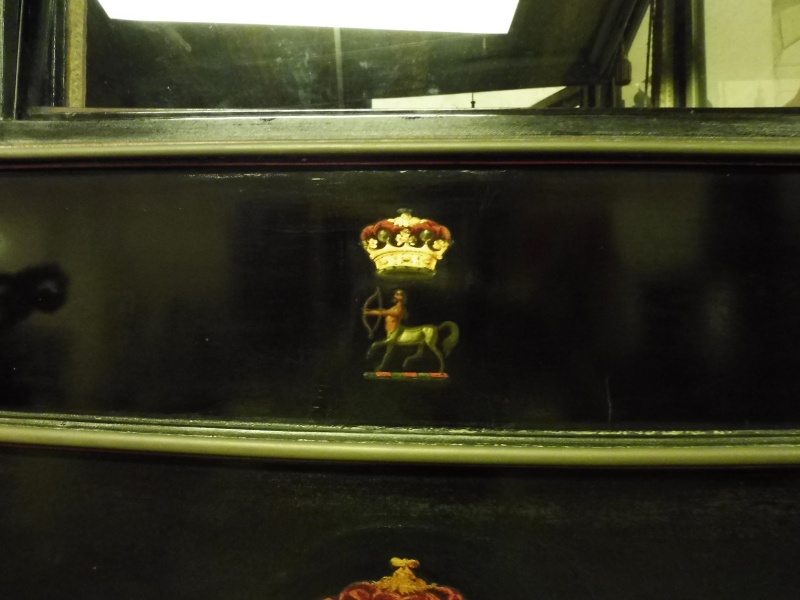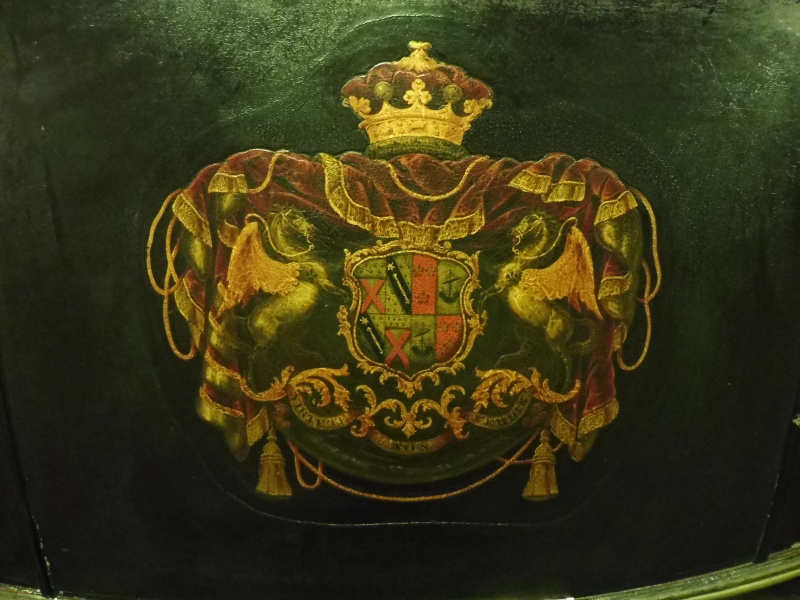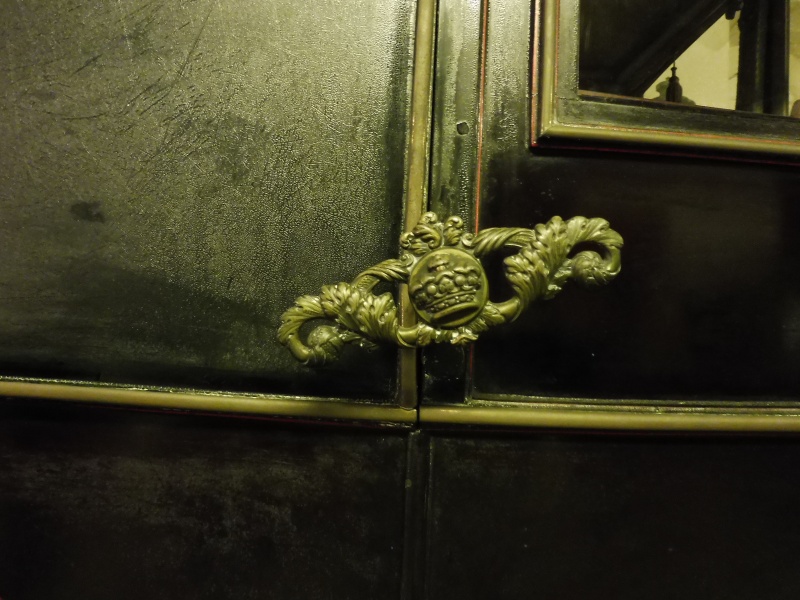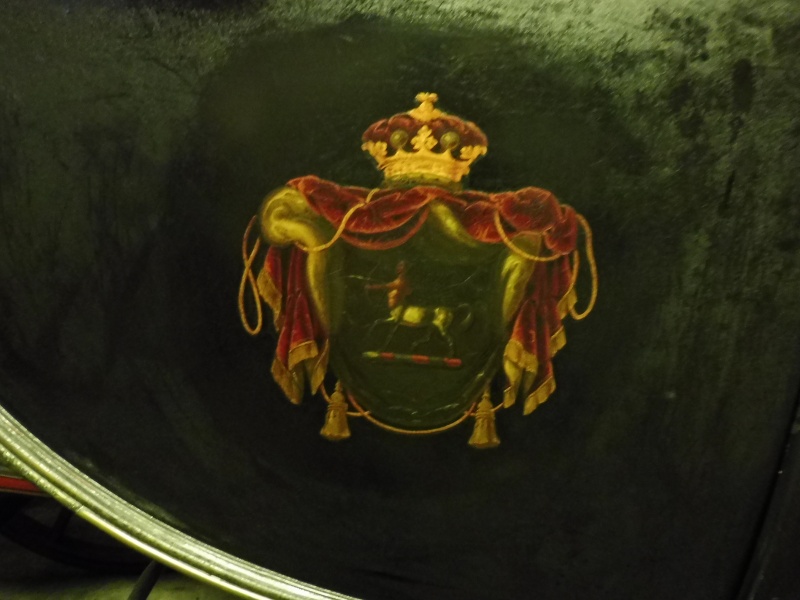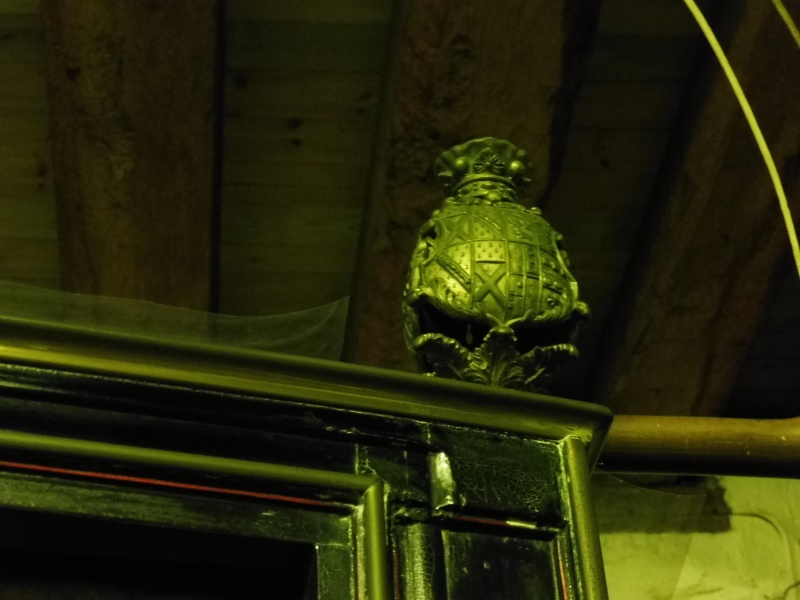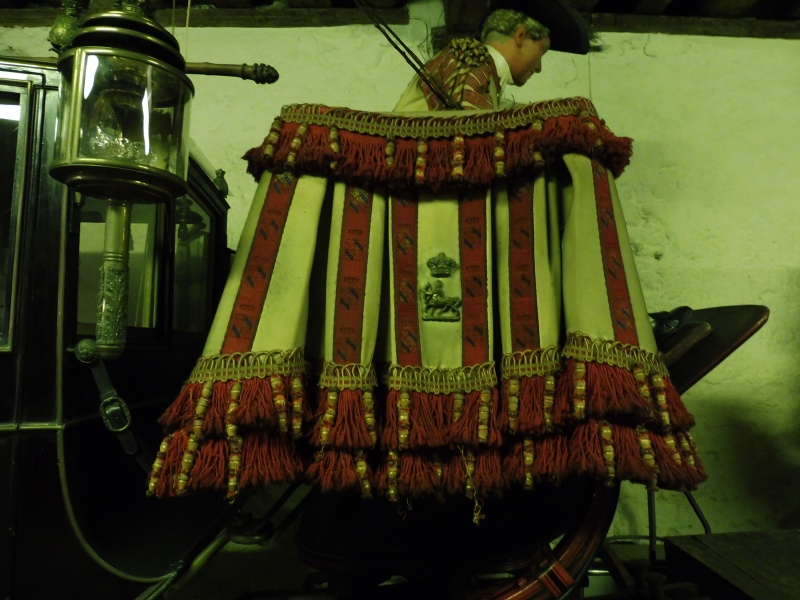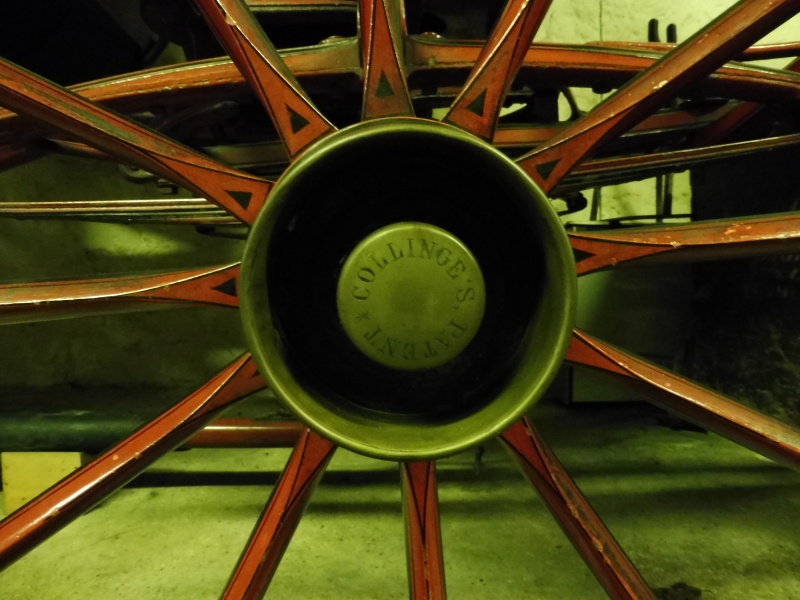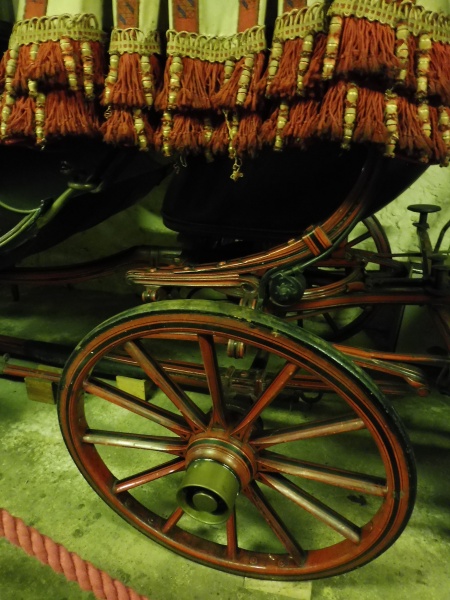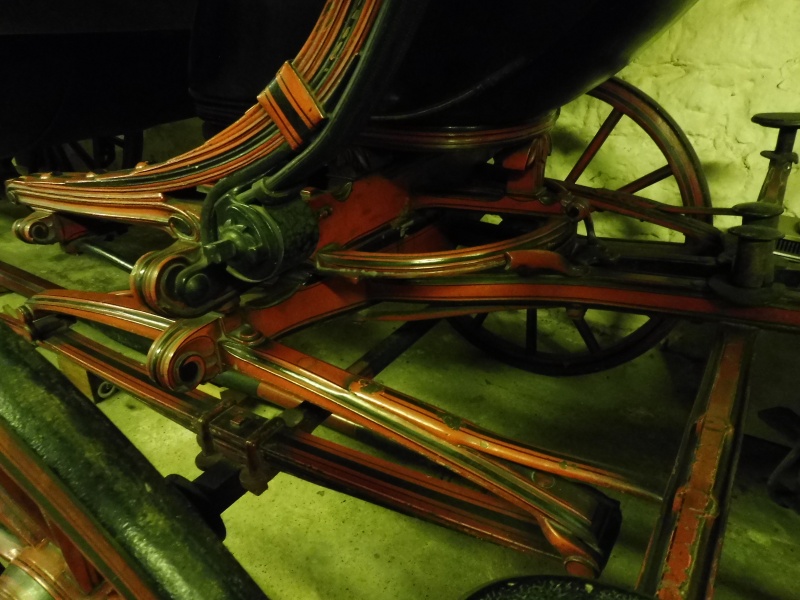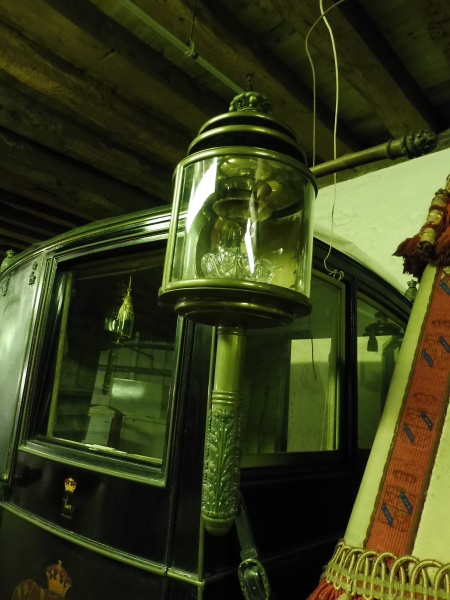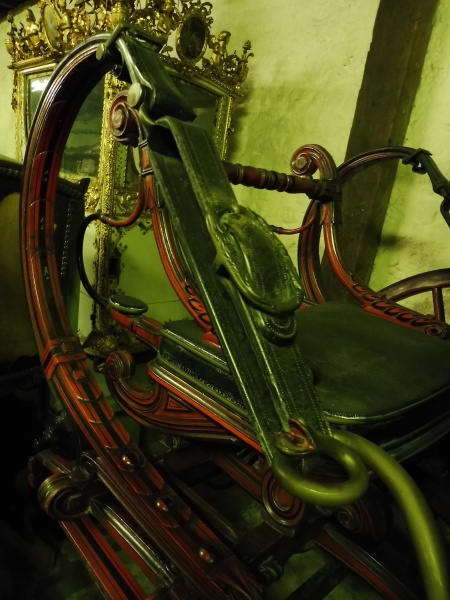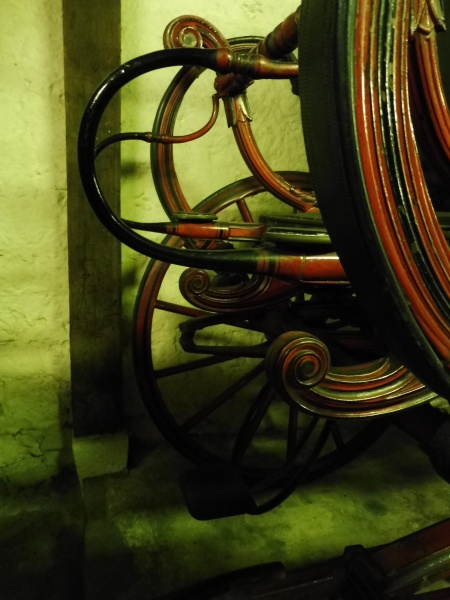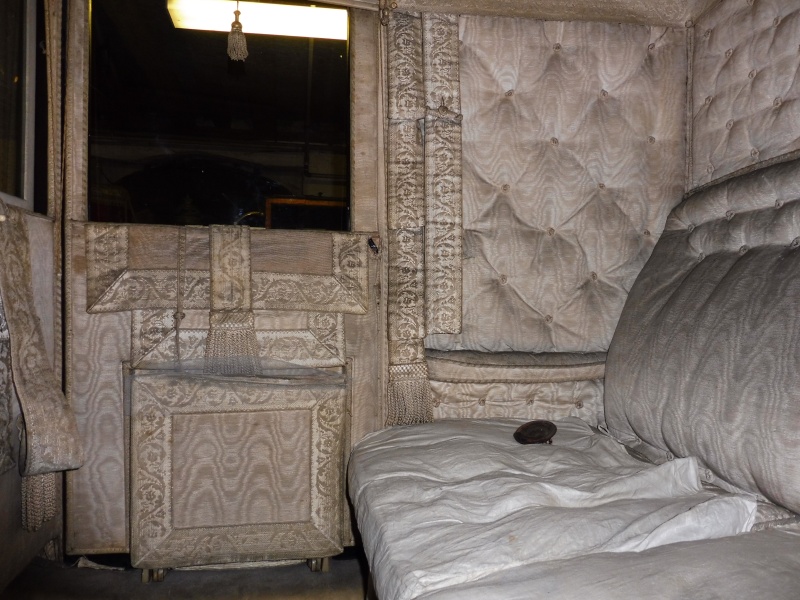Use the dots above to scroll through images.
Listed in 1 collection
Listed at 1 museum
Listed for 1 maker
Quick Details
Carriage Type
Town Chariot
Date of Production
1840 circa
Materials used
Paint, Wood, Iron, Leather, Wool Box Cloth, Bone, Silver, Brass, SilkSummary of State Chariot
Built for the Marquess of Lansdowne, this Chariot carries its owners coats of arms on the side panels and was a very high class carriage with fancy adornments and signs of once silvered exterior furniture.
A Chariot of this type was used on state occasions, driven by a coachman in full livery with powdered wig, tricorn hat, braided livery coat, plush breeches, white silk stockings and silver-buckled shoes. Two footmen, similarly dressed, except that they wore bicorn or cocked hats, stood on the “footmen’s cushion/platform”, the padded board behind the body, steadying themselves with the “footmen’s holders”. They carried silver-topped staves, known as wands, which were earlier used to keep the crowds away from the carriage and were expected to stand motionless and bolt upright
Dimensions
Height: 7ft 7 ¾”
Length: 13ft 5”
Width: 6ft ½”
Full description
Built for the Marquess of Lansdown in the second quarter of the 19th century, this is a very good example of a State Chariot and a carriage that would have been a very expensive set of wheels. It is displayed with a hammer cloth and coachman’s and footman’s livery which although they match each other, they do not actually match the interior upholstery. In a trunk displayed in front of the Chariot is a hammer cloth made in the same colours as the interior and it has matching broadlace. It is likely that the set displayed with this carriage was made later or belonged to another Chariot or Coach belonging to the Marquess of Lansdowne.
The body of the chariot is of the standard shape accommodating two people. Although the maker is unknown one can tell it was made by a top notch coachbuilder due to the quality of its build. All of the edges, the line between the upper and lower panels and the window frames have brass beading which retains some of its original silver plating in places. Serpent head dumb irons are at each corner. Along the top of the upper side panels are three silver mounts. They consist of a centaur surmounted by a crown. On the roof at each corner are finials with the family coat of arms. Fitted to the front and back panels are beautifully cast attachments for leather sway straps. One of the front sway straps survives with its buckle carrying a foliate design.
The doors are hung on concealed hinges. They have elaborate handles with a central roundel with a crown and intertwined acanthus leaves as the design. Each door has a sliding window. There are two further window glasses in the front panel of the Chariot. Steps fold up in to the body of the carriage on both sides.
Inside the Chariot is upholstered in a cream watered silk. The seat cushions, seat back, side and rear panels are buttoned. The broadlace is also cream with a foliate design. At the windows hang cream silk blinds with tassels in the same colour. The hammer cloth that is stored in the trunk alongside the Chariot has the same foliate pattern broadlace on a cream box cloth ground. Perhaps when the old hammer cloth became soiled (let’s face it, cream is not the most ideal of colours!) a new one was made with matching livery coats and the interior was not changed for some reason. This coupled with the possibility of the livery having once belonged to another Chariot or Coach gives plenty of opportunity to surmise.
The coachman’s seat is mounted on a Salisbury boot. It is covered in a very fine hammer cloth of a cream box cloth ground with red board lace sewn on to create a stripy effect. The broadlace was especially woven as it has the coat of arms of the Marquess of Lansdowne. If one lifts the upper fringe the original colours of the broadlace can be seen. The white and blue colouring has faded over time. The upper fringe is thick and red in colour with a woven gold edging, silk covered wooden drops hang at three inch intervals. The bottom edge has a double fringe the same as the upper one. In the centre is a silver mount of a centaur surmounted by a crown.
The Chariots body is supported on heafty leather braces with cast buckles attached to big sweeping C springs. The springs have ratchets to tighten the leather braces. It is an eight sprung carriage with under springs as well. The entire fore carriage is rather fine with scroll end transoms. The splinter bar is compassed down and passes under the futchells. The perch is compassed down to following the contours of the body of the Chariot. A pole is displayed with the carriage with a crab hook. Its leather padding survives.
At the rear of the Chariot is a footman’s platform accessed via a step with a large square plate with rounded corners. Two small steps with once silvered brass beading around the edge are fitted to the lower part of the pump handles. All of the hind carriage is finely carved with scrolls and leaf motifs. The platform has a leather covering and brass beading.
This carriage has a pair of magnificent lamps. They are cylindrical with double chimney’s. The chimney’s have brass beading on the edges and are surmounted by a crown. The candle holder has an elaborate casting of acanthus leaves at the base. In side is a cut glass bowl. The brass elements were presumably once silvered.
The wheels are 12 and 14 spoke English pattern with rubber tyres on collinge patent axles. Both axles are straight.
The body and Salisbury boot of this Chariot are painted black. The undercarriage and wheels are painted red with black lining. There is a large coat of arms on the doors and a smaller one on the rear side panels.
Inscriptions
On the axle caps: COLLINGES PATENT
Condition report
This Chariot is in original condition with no paintwork having been redone. The majority of the silver plating has been lost from the brass furniture. The interior is complete and in good order. The hammer cloth and liveries displayed with the carriage may not be original to this particular Chariot but they are a very rare survival and must be monitored and probably cleaned professionally.
Access information
This State Chariot is in the care of the Tyrwhitt-Drake Carriage Museum
Maidstone Museum and Art Gallery
St Faith's Street,
Maidstone
ME14 1LH
Picture credit
Maidstone Museum and Bentliff Art Gallery / Amy Bracey / Robert Lovell

 Carriage Foundation
Carriage Foundation